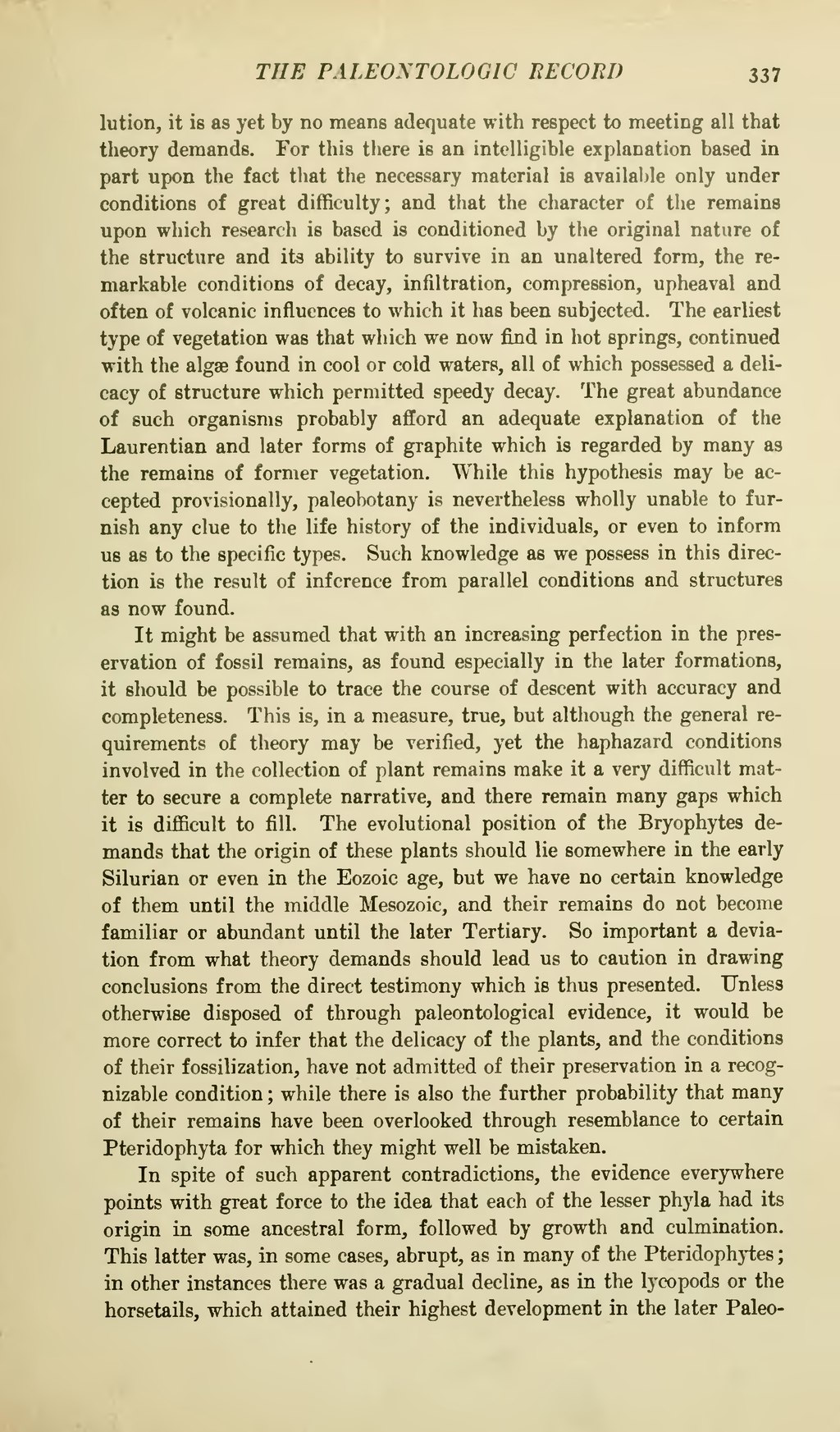lution-, it is as yet by no means adequate with respect to meeting all that theory demands. For this there is an intelligible explanation based in part upon the fact that the necessary material is available only under conditions of great difficulty; and that the character of the remains upon which research is based is conditioned by the original nature of the structure and its ability to survive in an unaltered form, the remarkable conditions of decay, infiltration, compression, upheaval and often of volcanic influences to which it has been subjected. The earliest type of vegetation was that which we now find in hot springs, continued with the alga? found in cool or cold waters, all of which possessed a delicacy of structure which permitted speedy decay. The great abundance of such organisms probably afford an adequate explanation of the Laurentian and later forms of graphite which is regarded by many as the remains of former vegetation. While this hypothesis may be accepted provisionally, paleobotany is nevertheless wholly unable to furnish any clue to the life history of the individuals, or even to inform us as to the specific types. Such knowledge as we possess in this direction is the result of inference from parallel conditions and structures as now found.
It might be assumed that with an increasing perfection in the preservation of fossil remains, as found especially in the later formations, it should be possible to trace the course of descent with accuracy and completeness. This is, in a measure, true, but although the general requirements of theory may be verified, yet the haphazard conditions involved in the collection of plant remains make it a very difficult matter to secure a complete narrative, and there remain many gaps which it is difficult to fill. The evolutional position of the Bryophytes demands that the origin of these plants should lie somewhere in the early Silurian or even in the Eozoic age, but we have no certain knowledge of them until the middle Mesozoic, and their remains do not become familiar or abundant until the later Tertiary. So important a deviation from what theory demands should lead us to caution in drawing conclusions from the direct testimony which is thus presented. Unless otherwise disposed of through paleontological evidence, it would be more correct to infer that the delicacy of the plants, and the conditions of their fossilization, have not admitted of their preservation in a recognizable condition; while there is also the further probability that many of their remains have been overlooked through resemblance to certain Pteridophyta for which they might well be mistaken.
In spite of such apparent contradictions, the evidence everywhere points with great force to the idea that each of the lesser phyla had its origin in some ancestral form, followed by growth and culmination. This latter was, in some cases, abrupt, as in many of the Pteridophytes; in other instances there was a gradual decline, as in the lycopods or the horsetails, which attained their highest development in the later Paleo-
